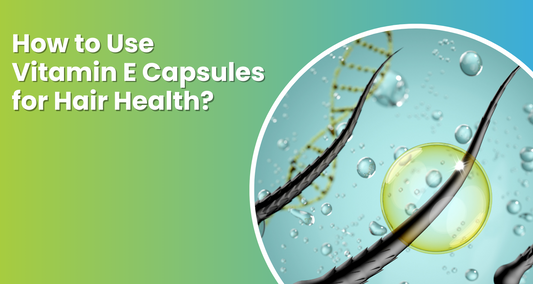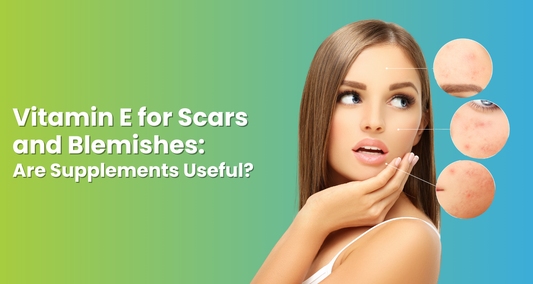In the ever-evolving world of skincare, the quest for effective and natural solutions continues to captivate enthusiasts and experts alike. Astaxanthin, a potent antioxidant derived from microalgae, is emerging as a skincare powerhouse, offering myriad benefits that contribute to a radiant and healthy complexion.
This blog will delve into the 8 transformative ways in which astaxanthin for skin health is beneficial and why you should start incorporating it into your skincare routine
1. Astaxanthin for Skin Health: Superior Antioxidant Protection
Astaxanthin skin care products have become quite popular in recent times. Astaxanthin stands out as a superior antioxidant, demonstrating an ability to neutralize free radicals more effectively than well-known counterparts like vitamins C and E.
Its molecular structure allows it to traverse skin cells' water and lipid compartments, providing comprehensive protection against oxidative stress. By minimizing free radical damage, astaxanthin helps preserve the skin's youthful appearance and vitality.
2. UV Radiation Defense
Many skin care products have used astaxanthin for sun damage for the last decade. Exposure to ultraviolet (UV) radiation primarily contributes to premature aging and skin damage. Astaxanthin's unique molecular structure enables it to act as an internal sunscreen, offering an additional defense against UV-induced skin aging.
Studies suggest that astaxanthin may help reduce the harmful effects of UV radiation, including the formation of wrinkles and fine lines. [1]
3. Astaxanthin for Skin Health: Skin Elasticity
Astaxanthin has been linked to improved skin elasticity, a key factor in maintaining a supple and youthful complexion. By supporting collagen production and inhibiting the breakdown of elastin, astaxanthin contributes to firmer and more resilient skin.
Astaxanthin for skin elasticity particularly appeals to individuals seeking natural solutions to combat the signs of aging and maintain skin tautness.
4. Astaxanthin for Wrinkles: A well-known Beauty Secret
Astaxanthin, with its unique molecular structure, is a powerful defender against oxidative stress. Its ability to traverse skin cells' water and lipid compartments provides comprehensive protection. By neutralizing free radicals and mitigating the impact of oxidative stress, astaxanthin contributes to the preservation of collagen and elastin.
This protective action forms a robust barrier against the breakdown of these crucial proteins, thereby minimizing the visible signs of aging.
5. Astaxanthin for Skin Inflammation: Anti-inflammatory Treasure
Inflammation is a common denominator in various skin conditions, from redness to irritation. Astaxanthin's potent anti-inflammatory properties make it valuable for addressing skin concerns.
By navigating the intricate pathways of inflammation, astaxanthin has the potential to soothe and calm the skin. By delving into the molecular mechanisms of inflammation, astaxanthin exerts its influence at a cellular level, helping restore skin balance and harmony.
This makes it a versatile and valuable component in skincare routines tailored to sensitive skin or those prone to reactivity. This is one of the significant reasons why the use of astaxanthin for skin health products is on the rise.
6. Brightening and Even Skin Tone
Hyperpigmentation and uneven skin tone are common problems faced by many people. That’s why the use of astaxanthin for hyperpigmentation in skincare products has increased. Astaxanthin's impact on melanin production contributes to its potential to brighten the skin and promote an even skin tone.
By inhibiting excessive pigmentation, astaxanthin may help reduce the appearance of age spots, hyperpigmentation, and other forms of uneven skin discoloration, resulting in a more radiant complexion. Not only this but there has also been a significant increase in the use of astaxanthin for collagen production in recent years due to these properties.
7. The Use of Astaxanthin for Skin Hydration Products
Astaxanthin's ability to support skin barrier function and moisture retention enhances overall hydration. By preventing water loss from the skin's surface, astaxanthin helps create a protective barrier that locks in essential moisture.
Astaxanthin for skin is particularly used by individuals with dry or dehydrated skin, promoting a smoother and more nourished complexion. That is why astaxanthin products are often used in nighttime skincare routines.
8. Potential Acne Relief
Acne, a common skin condition characterized by inflamed and clogged pores, often involves an inflammatory response. Due to its properties, there has been a significant rise in the use of astaxanthin for acne-related products. Astaxanthin's ability to modulate inflammation plays a crucial role in addressing the root causes of acne and promoting clearer skin.
Astaxanthin's anti-inflammatory prowess steps in as a soothing force, helping to calm the inflammatory processes within the skin. Astaxanthin may reduce the severity and frequency of acne breakouts by mitigating inflammation.
What Is the Right Astaxanthin Dose for Skin Health?
We have now answered the most prominent question: Does astaxanthin work for the skin? Let’s move to the next part: What is the right dose? Determining the appropriate astaxanthin dosage for skin health involves considering individual factors such as age, skin type, and health goals. A daily dosage of 4 to 12 milligrams is recommended for general antioxidant support and skin benefits.
However, consulting with a healthcare professional to tailor the dosage to specific needs is crucial. Starting with a lower dose and gradually increasing it can be a prudent approach to assessing tolerance and efficacy, ensuring that astaxanthin contributes positively to skin health without exceeding optimal levels.
Astaxanthin vs. Retinol for Skin: Which is Better?
Astaxanthin and retinol are often compared for their anti-aging properties. While retinol is a derivative of vitamin A known for promoting cell turnover and collagen production, astaxanthin's strength lies in its potent antioxidant capabilities.
Unlike retinol, astaxanthin does not cause skin sensitivity to sunlight, making it a suitable option for daytime use. Both have their merits and choosing between them may depend on individual skin concerns and sensitivities.
Astaxanthin vs. Hyaluronic Acid for Skin: A Brief Comparison
Astaxanthin and hyaluronic acid serve distinct roles in skincare. Hyaluronic acid is renowned for its hydrating properties, attracting and retaining moisture in the skin. On the other hand, astaxanthin's strength lies in its antioxidant and anti-inflammatory benefits.
While hyaluronic acid focuses on maintaining skin hydration, astaxanthin contributes to overall skin health and protection against environmental stressors. Combining both in a skincare routine can provide a comprehensive approach to hydration and skin resilience.
Conclusion
As we navigate the vast skincare landscape, astaxanthin emerges as a remarkable and multifaceted ally. Its antioxidant prowess and a range of skin-enhancing benefits position astaxanthin as a natural powerhouse in promoting a radiant and healthy complexion. Ongoing studies may show the potential use of astaxanthin for wound healing.[2]
While astaxanthin supplements are widely available, there are also natural ways to get astaxanthin for skin health. Wild-caught salmon, shrimp, lobster, and trout are rich in astaxanthin, offering a delicious way to boost your intake.
Whether you're seeking protection against environmental stressors, aiming to reduce the visible signs of aging, or desiring a more even and luminous skin tone, astaxanthin offers transformative potential for skincare enthusiasts embracing the beauty of nature in their daily routines.
References
Disclaimer: These statements have not been assessed by the FDA. The information contained within this page is for educational purposes only. It is not intended to replace the advice or attention of health care professionals.




